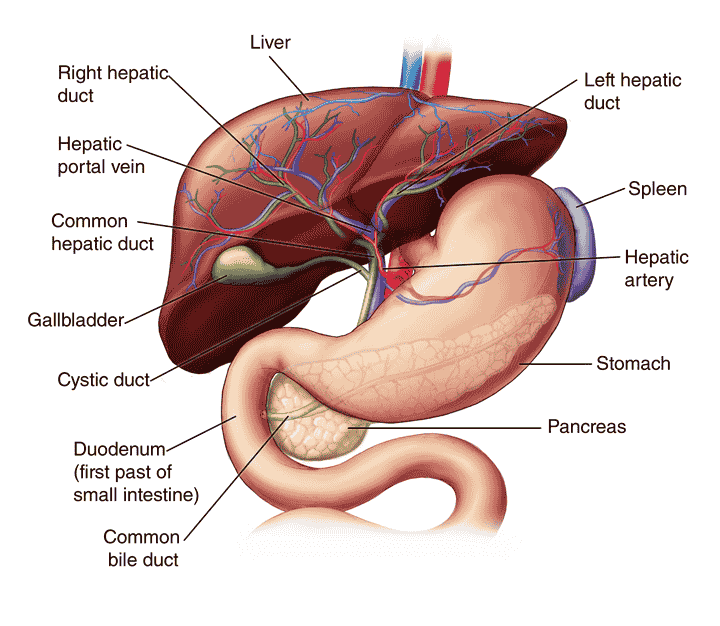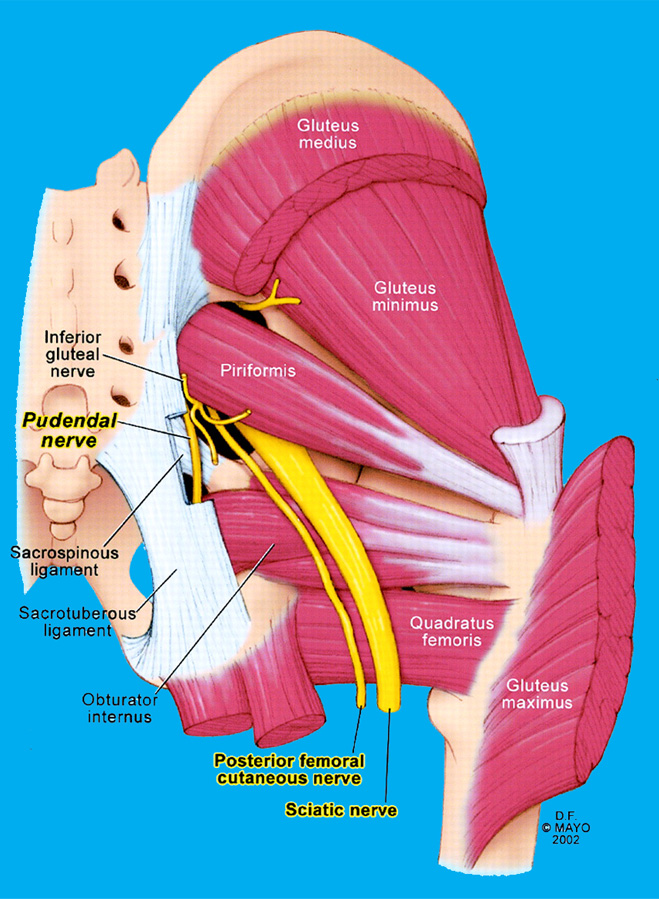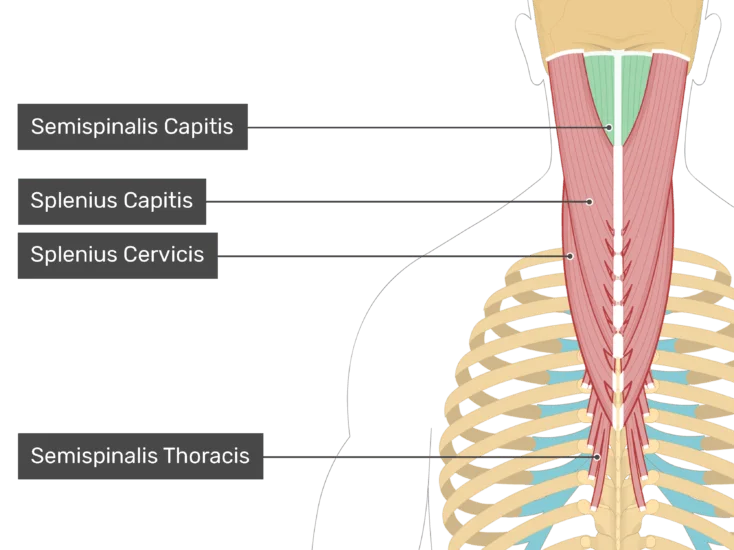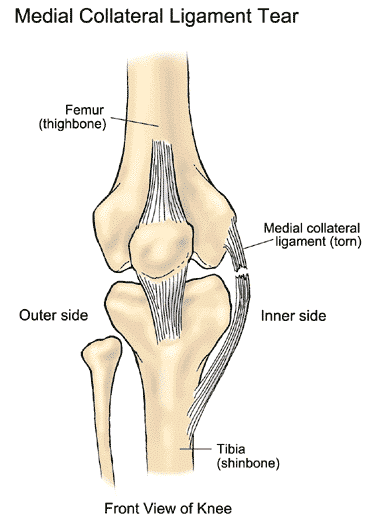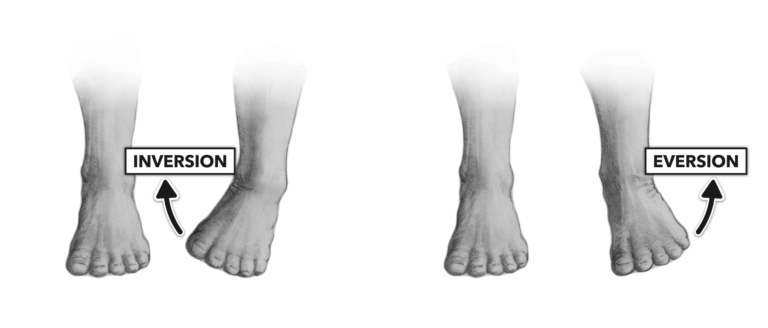Liver
Table of Contents
Introduction
The liver is an important Body organ located in the upper right quadrant of the abdomen. It is responsible for detoxifying harmful substances, producing bile to aid in digestion, storing essential vitamins and minerals, and regulating metabolism.
The liver also helps break down fats, proteins, and carbohydrates, ensuring the body’s energy supply is efficiently managed. Given its multifunctional nature, maintaining liver health is essential for overall well-being and preventing conditions such as fatty liver disease, cirrhosis, and liver failure.
The hepatic system is the predominant internal organization of the human anatomy. In conjunction with hundreds of additional essential functions, it filters pollutants from the body’s blood supply, keeps blood sugar levels in check, controls blood clotting, and much more. It is established in the right upper abdomen, under the rib cage.
All of the blood in the body is filtered by the liver, which also detoxifies harmful elements like alcohol and narcotics. A different substance that the liver produces is bile, a fluid that assists with eliminating toxins and the uptake of fat.
The liver is segmented into several sections, each comprising millions of lesions given that it is segmented into eight individual and minor lobes.
Functions of the Liver
The liver is an important part that conducts more than 500 essential tasks for the body. These include producing necessary nutrients, maintaining blood sugar levels, and clearing waste materials and foreign substances from the bloodstream.
- Albumin Production: A protein designated albumin prohibits blood fluids from spreading into surrounding tissue. It also conveys vitamins, enzymes, and hormones across the body.
- Bile Production: The small intestine’s potential to reduce and consume lipids requires the fluid termed bile.
- Filters Blood: All blood that escapes the stomach and intestines flows via the liver, which purifies it of every harmful substance like toxins and byproducts.
- Regulates Amino Acids: Proteins are comprised primarily of amino acids.
- Regulates Blood Clotting: Vitamin K must be consumed to make blood clotting coagulants, and it can only be absorbed with the liver’s secretion of bile.
- Resists Infections: Microorganisms from the normal flow are taken up by the liver as a function of the elimination process.
- Stores Vitamins and Minerals: Significant amounts of zinc, copper, and the nutrients A, D, E, K, and B12 are retained in the liver.
- Processes Glucose: Excess glucose, or sugar, is released from the bloodstream via the liver and then preserved as glycogen. It may alter glycogen back into glucose as needed.
Anatomy of the Liver
The liver exhibits a reddish-brown color and a fair cone- or wedge-like shape, with the large end above the small intestine and the small end that follows the stomach and spleen. Inside the lung cavities in the area of the abdomen on one side are all of the organs. It differs in muscular endurance from four to 5.
Blood Supply
Two sources of blood hydrate the liver. The hepatic artery is the first, carrying blood that has been oxygenated from the general circulation. The second is the hepatic portal vein, which directs nutrient-rich, oxygen-lacking blood from the small intestine.
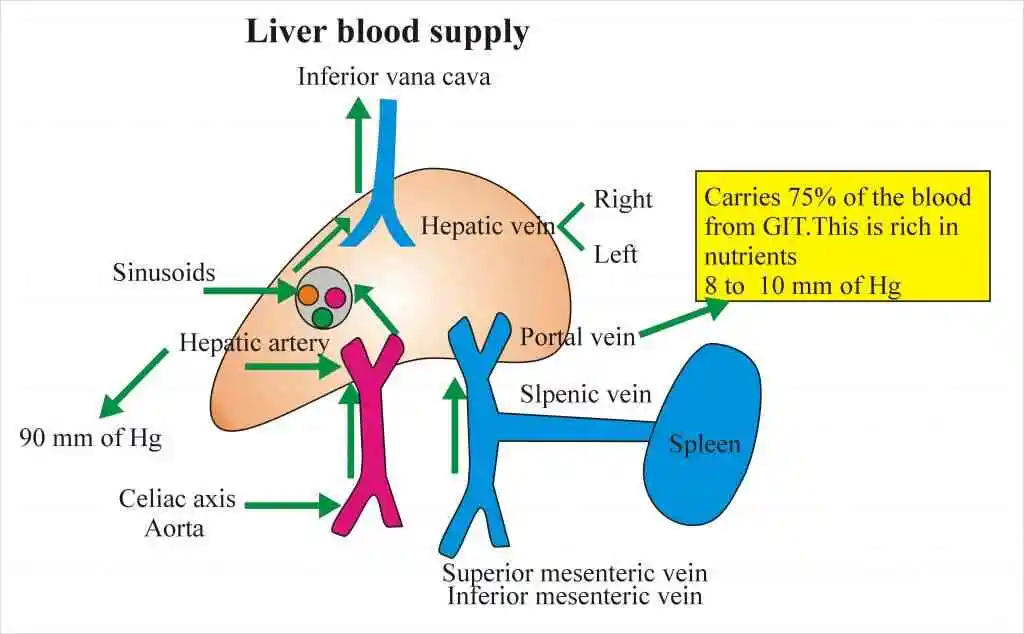
Various chemical reactions occur in the hepatic cells, which are reached by the blood after going through the liver tissue. The manner of liver disease distribution facilitates the liver’s deconstruction within the bloodstream.
Compared to most other organs, the liver tissue is not vascularised with a capillary network and rather involves blood-filled sinusoids that round the hepatic cells.
Nerve supply
The liver’s connective tissue is supplied with blood by the hepatic plexus, which is constructed from receptive (coeliac plexus) and the sympathetic nervous system (its vagus nerve) nerve fibers. The fibers follow the branches of the portal vein and hepatic artery as they enter the liver via the porta hepatis.
Structure
The liver’s four lobes are categorized into the canal and quadrate zones, in conjunction with the massive right and left lobes. The term falciform, indicating “sickle-shaped” in Latin, corresponds to the ligament that joins the liver to the intestinal tract and influences the shape of the left and right chambers. The lobes of the liver can be subsequently divided into eight segments, each of which comprises thousands of lobules.
Liver Surfaces
The location and associated structures provide data on the liver’s exterior features. The diaphragmatic and visceral surfaces of the liver are the two types:
- Diaphragmatic surface – the anterior superior apparent of the liver.
Smooth and convex, it lies securely inside its arched membrane.
- Visceral surface – The distal bottom segment of the liver.
- It is lumpy and flat due to the surrounding organs’ shaping of it.
- The right kidney, right adrenal gland, right colic flexure, transverse colon, first portion of the duodenum, gallbladder, mouth, throat, and stomach are all in contact with it.
Parts
- Common Hepatic Duct: a tube that departs the liver conveying bile. It originates from the connective tissue of the left and right hepatic ducts.
- Falciform Ligament: a thin, fibrous ligament that joins the liver’s two lobes and separates themselves from the abdominal wall.
- Glisson’s Capsule: A floppy wrapping of connective tissue envelopes the functioning liver and its veins and valves that drain it.
- Hepatic Artery: our primary focus is blood vessel that serves the liver with fluids rich in oxygen in their environment.
- Hepatic Portal Vein: the main blood vessel that gives the liver oxygen-rich blood.
- Lobes: components of the liver that are anatomical.
- Lobules: The small parts which constitute the liver.
Maintaining a Healthy Liver
Living a healthy lifestyle is the best barrier against liver disease. The instructions that follow will assist in preserving the liver’s normal function:
- Avoid Illicit Drugs: The liver will eliminate contaminants like substances that are illicit. Administering these medications could result in adverse outcomes over time.
- Drink Alcohol Moderately: Alcohol has to be reduced apart through the liver. While the liver can take modest amounts of alcohol, excessive use of it can be detrimental.
- Exercise Regularly: Every organ, such as the liver, will gain advantages from consistent physical activity in terms of general health.
- Eat Healthy Foods: Consuming a lot of fat can cause fatty liver disease and impair the liver’s capability to operate.
- Practice Safe Sex: To prevent sexually transmitted infections like hepatitis C, maintain protection.
- Vaccinate: Get prescribed vaccines against diseases that grow in the liver, such as yellow fever and malaria, as well as influenza A and B, especially before visiting.
FAQs
Two sources of blood provide the liver. Second in importance is the hepatic portal vein, which transmits blood from the small intestine which has become deficient in oxygen and rich in chemicals.
In combination with the more expansive right and left lobes, the vulnerable caudal and quadrate lobes are among the four lobes that jointly make up almost every part of the liver.
Sympathetic and parasympathetic nerves in the liver modify most hepatic actions.
There are many ways in which the liver and brain interact to maintain normal functioning. As an illustration, when the brain cannot generate these elements on alone, the liver contributes by serving the brain with eating habits.
Along the hypothalamus-pituitary axis, pituitary hormones favor the release of thyroid hormones and antacids. Together, various brain and neuroendocrine connections permit the hypothalamus to influence liver function.
Brain function develops when the liver loses its ability to evacuate impurities from the blood. A problem like this might appear either abruptly or gradually over time.
References
- American Liver Foundation. The Progression of Liver Disease to Liver Cancer (https://liverfoundation.org/resource-center/videos/the-progression-of-liver-disease-to-liver-cancer/). Last updated 12/1/2022. Accessed 10/4/2023.
- Asrani SK, Devarbhavi H, Eaton J, Kamath PS. Burden of liver diseases in the world (https://pubmed.ncbi.nlm.nih.gov/30266282/). J Hepatol. 2019 Jan;70(1):151-171. Accessed 10/4/2023.
- Centers for Disease Control and Prevention (U.S.). FastStats: Chronic Liver Disease and Cirrhosis (https://www.cdc.gov/nchs/fastats/liver-disease.htm). Accessed 10/4/2023.
- https://www.kenhub.com/en/library/anatomy/blood-supply-and-innervation-of-the-liver
- https://teachmeanatomy.info/abdomen/viscera/liver/
- https://columbiasurgery.org/liver/liver-and-its-functions#:~:text=The%20Liver%20and%20Its%20Functions,in%20the%20right%20upper%20abdomen.

